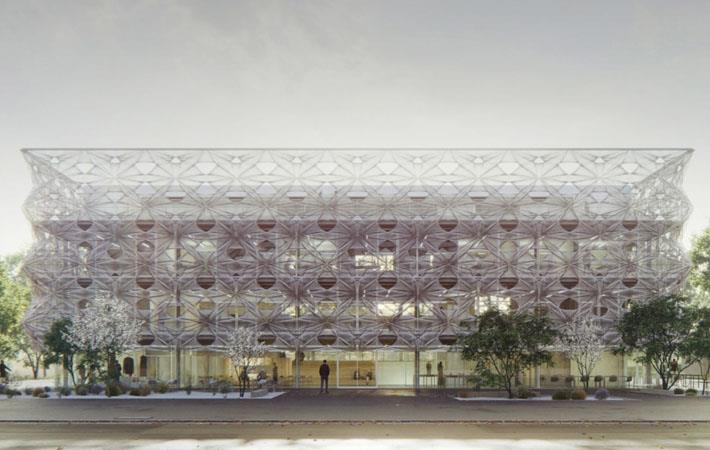Stuttgart’s developed building elements enter use stage
08
Aug ’20

Pic: University of Stuttgart
The novel fibre-composite making components made at the University of Stuttgart are now coming into the software phase in architectural follow, right after the achievements in a structure competitiveness for the new training and innovation centre Texoversum in Reutlingen. The façade components will be made by FibR, a spin-off from the University of Stuttgart.
Texoversum, an training, study and innovation centre for the cross-chopping technological know-how of textiles, is staying proven on the campus of Reutlingen University of Utilized Sciences. Allmann Sattler Wappner Architekten, Menges Scheffler Architekten and Jan Knippers Ingenieure are liable for the structure as a workforce. They have been awarded initial prize in the connected structure competitiveness and subsequently commissioned with the realisation of the making comprising nearly 3,000 square metre of place for distinctive person groups.
The architectural strategy is dependent on a multifaceted assessment of the topic of textiles. The structure concept is mirrored the two structurally in the inside interweaving of functions and in the making envelope that produces its individual identification. The unique façade created of carbon and glass fibres, the initial of its form to be implemented in this way, represents the innovative energy and foreseeable future viability of fibre-dependent materials and textile methods. In a robotic winding course of action made at the Institute for Computational Structure and Construction (ICD – Achim Menges) and the Institute of Developing Structures and Structural Structure (ITKE – Jan Knippers) at the University of Stuttgart, each personal facade element can be separately tuned to its purposeful prerequisites.
Commencing from three essential modules, the components change on their own according to their orientation toward the sunlight and kind a unique, multi-layered appearance. The components are wholly self-supporting and do not demand a supporting construction. Their staggered arrangement will allow no cost views. In addition to the purposeful prerequisites as external shading devices and guard railing, the façade fulfills aesthetic and agent needs and produces a exclusive making that expresses textiles as a driving power for technological know-how. The façade components will be made by the corporation FibR, a spin-off from the University of Stuttgart.
Fibre2Fashion News Desk (SV)
The novel fibre-composite making components made at the University of Stuttgart are now coming into the software phase in architectural follow, right after the achievements in a structure competitiveness for the new training and innovation centre Texoversum in Reutlingen. The façade components will be made by FibR, a spin-off from the University of Stuttgart.






